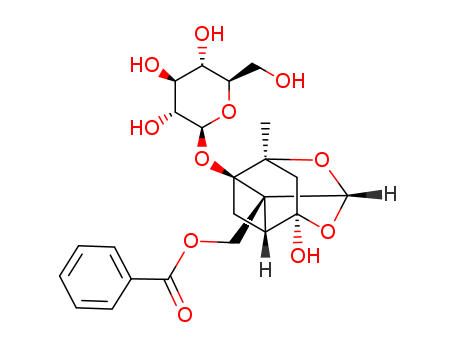Multi-step reaction with 13 steps
1: Et3N / CH2Cl2
2: 1.) (COCl)2, DMSO, 2.) Et3N / 1.) CH2Cl2, -60 deg C, 2.) CH2Cl2
3: KCN, 18-crown-6*MeCN / acetonitrile
4: 0.1 M aq. HCl / tetrahydrofuran
5: PhI(OAc)2, I2 / benzene / Irradiation
6: HCl / dioxane / 40 °C
7: (COCl)2, DMF / benzene
8: pyridine, DMAP / toluene
9: 1.) O2, 2.) (MeO)3P / 1.) toluene, 80 deg C, 2.) toluene
10: 71 percent / Et3N, DMAP / CH2Cl2
11: 1.) O3, MeOH, 2.) p-NO2-C6H4COCl, Et3N, DMAP / 1.) CH2Cl2, -78 deg C, 2.) CH2Cl2
12: 67 percent / BF3*Et2O / toluene / -78 °C
13: 100 percent / H2 / Pd(OH)2 / methanol; ethyl acetate; H2O
With
pyridine; hydrogenchloride; methanol; dmap; potassium cyanide; oxalyl dichloride; [bis(acetoxy)iodo]benzene; boron trifluoride diethyl etherate; hydrogen; iodine; oxygen; 4-nitro-benzoyl chloride; ozone; dimethyl sulfoxide; 18-crown-6 complexed with acetonitrile; triethylamine; N,N-dimethyl-formamide; phosphorous acid trimethyl ester;
palladium dihydroxide;
In
tetrahydrofuran; 1,4-dioxane; methanol; dichloromethane; water; ethyl acetate; toluene; acetonitrile; benzene;
DOI:10.1021/ja00088a055



 Xn,
Xn, N,
N, T,
T, F
F

